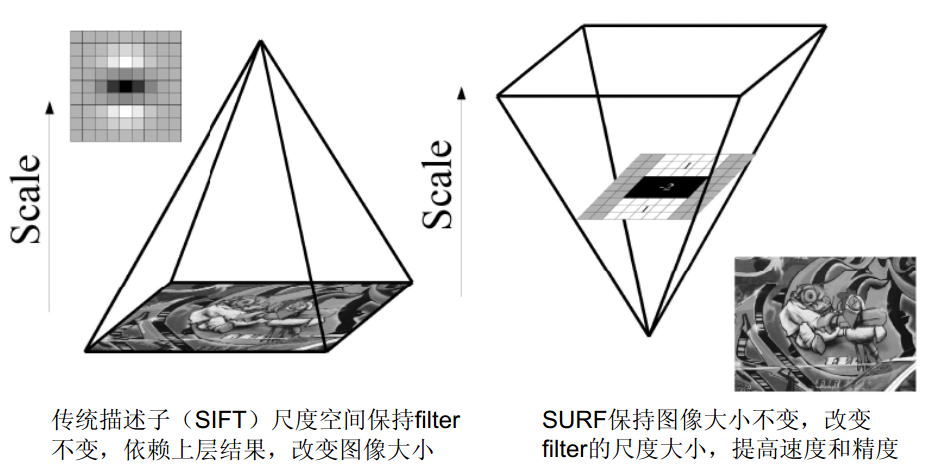【OpenCV图像识别实战指南】:10步入门图像识别黑科技
发布时间: 2024-08-07 03:59:29 阅读量: 46 订阅数: 26 


opencv图像识别的系统源码.zip

# 1. OpenCV图像识别的基础理论
图像识别是计算机视觉领域的一个重要分支,它涉及到让计算机理解和解释图像中包含的信息。OpenCV(Open Source Computer Vision Library)是一个流行的开源计算机视觉库,它提供了丰富的图像处理和分析算法。
在本章中,我们将介绍OpenCV图像识别的基础理论,包括图像表示、图像处理操作、特征提取和匹配等基本概念。我们将深入探讨这些概念,为读者理解OpenCV图像识别的原理和技术奠定坚实的基础。
# 2.1 图像处理的基础操作
### 2.1.1 图像读取和显示
**代码块:**
```python
import cv2
# 读取图像
image = cv2.imread('image.jpg')
# 显示图像
cv2.imshow('Image', image)
cv2.waitKey(0)
cv2.destroyAllWindows()
```
**逻辑分析:**
* `cv2.imread()` 函数用于读取图像文件,返回一个 NumPy 数组,其中包含图像像素值。
* `cv2.imshow()` 函数用于显示图像,`'Image'` 是显示图像的窗口名称。
* `cv2.waitKey(0)` 函数等待用户按下任意键,然后继续执行。
* `cv2.destroyAllWindows()` 函数关闭所有 OpenCV 窗口。
### 2.1.2 图像转换和增强
**代码块:**
```python
import cv2
# 图像转换:灰度化
gray_image = cv2.cvtColor(image, cv2.COLOR_BGR2GRAY)
# 图像增强:高斯滤波
blurred_image = cv2.GaussianBlur(gray_image, (5, 5), 0)
# 图像增强:直方图均衡化
equalized_image = cv2.equalizeHist(blurred_image)
```
**逻辑分析:**
* `cv2.cvtColor()` 函数用于将图像从 BGR 颜色空间转换为灰度颜色空间。
* `cv2.GaussianBlur()` 函数用于对图像进行高斯滤波,以去除噪声。
* `cv2.equalizeHist()` 函数用于对图像进行直方图均衡化,以提高图像对比度。
**参数说明:**
* `cv2.GaussianBlur()` 函数的第二个参数是一个元组,表示滤波器核的大小。
* `cv2.equalizeHist()` 函数没有参数。
# 3.1 人脸识别与情绪分析
#### 3.1.1 人脸检测和特征提取
**人脸检测**
人脸检测是图像识别中的一项基本任务,它涉及识别图像中是否存在人脸。OpenCV提供了多种人脸检测算法,包括:
* **Haar级联分类器:**一种快速高效的算法,使用预训练的级联分类器检测人脸。
* **深度神经网络 (DNN):**一种基于深度学习的算法,可以实现更高的准确率,但计算成本更高。
**特征提取**
一旦检测到人脸,下一步就是提取其特征。这些特征用于识别不同的人脸并分析他们的情绪。OpenCV提供了多种特征提取算法,包括:
* **局部二值模式 (LBP):**一种基于局部像素模式的算法,对光照变化具有鲁棒性。
* **直方图定向梯度 (HOG):**一种基于梯度方向的算法,对形状和纹理信息敏感。
* **深度学习模型:**使用深度神经网络提取高维特征,可以实现更高的准确率。
#### 3.1.2 情绪识别和分类
**情绪识别**
情绪识别是确定图像中人脸所表达的情绪的过程。OpenCV提供了一些情绪识别算法,包括:
* **面部动作编码系统 (FACS):**一种基于面部肌肉运动的系统,用于识别基本情绪。
* **深度学习模型:**使用深度神经网络分析面部表情并识别情绪。
**情绪分类**
情绪分类是将识别出的情绪分配到预定义类别(如快乐、悲伤、愤怒等)的过程。OpenCV提供了多种情绪分类算法,包括:
* **支持向量机 (SVM):**一种监督学习算法,用于将数据点分类到不同的类别。
* **决策树:**一种基于规则的算法,用于根据一组特征对数据进行分类。
* **深度学习模型:**使用深度神经网络对情绪进行分类,可以实现更高的准确率。
**代码示例:**
```python
import cv2
# 人脸检测
face_cascade = cv2.CascadeClassifier(cv2.data.haarcascades + 'haarcascade_frontalface_default.xml')
# 情绪识别
emotion_model = cv2.face.createFacemarkLBF()
# 从图像中读取人脸
image = cv2.imread('image.jpg')
gray = cv2.cvtColor(image, cv2.COLOR_BGR2GRAY)
faces = face_cascade.detectMultiScale(gray, 1.1, 5)
# 提取人脸特征
for (x, y, w, h) in faces:
roi_gray = gray[y:y+h, x:x+w]
landmarks = emotion_model.fit(roi_gray)
# 分类情绪
emotions = ['快乐', '悲伤', '愤怒', '惊讶', '恐惧']
emotion_index = emotion_model.predict(landmarks)
emotion = emotions[emotion_index]
# 显示结果
cv2.putText(image, emotion, (x, y), cv2.FONT_HERSHEY_SIMPLEX, 0.5, (0, 255, 0), 2)
cv2.imshow('Emotion Recognition', image)
cv2.waitKey(0)
cv2.destroyAllWindows()
```
**代码逻辑分析:**
* 使用Haar级联分类器检测图像中的人脸。
* 使用FacemarkLBF模型提取人脸特征。
* 使用支持向量机对特征进行分类并确定情绪。
* 在图像上显示识别出的情绪。
# 4. OpenCV图像识别进阶应用**
**4.1 图像识别在医疗领域的应用**
**4.1.1 医学图像分析和诊断**
图像识别技术在医疗领域具有广泛的应用,尤其是在医学图像分析和诊断方面。通过利用计算机视觉算法,图像识别可以帮助医疗专业人员从医学图像中提取有价值的信息,从而辅助诊断和治疗。
**代码示例:**
```python
import cv2
# 读取医学图像
image = cv2.imread('medical_image.jpg')
# 图像预处理
gray = cv2.cvtColor(image, cv2.COLOR_BGR2GRAY)
blur = cv2.GaussianBlur(gray, (5, 5), 0)
# 特征提取
edges = cv2.Canny(blur, 100, 200)
# 特征分析
contours, hierarchy = cv2.findContours(edges, cv2.RETR_EXTERNAL, cv2.CHAIN_APPROX_SIMPLE)
# 识别病灶区域
for contour in contours:
if cv2.contourArea(contour) > 100:
cv2.drawContours(image, [contour], -1, (0, 255, 0), 2)
# 显示结果
cv2.imshow('Medical Image Analysis', image)
cv2.waitKey(0)
cv2.destroyAllWindows()
```
**参数说明:**
* `cv2.imread()`:读取医学图像。
* `cv2.cvtColor()`:将图像转换为灰度图像。
* `cv2.GaussianBlur()`:对灰度图像进行高斯模糊。
* `cv2.Canny()`:提取图像边缘。
* `cv2.findContours()`:查找图像中的轮廓。
* `cv2.contourArea()`:计算轮廓的面积。
* `cv2.drawContours()`:在图像上绘制轮廓。
**逻辑分析:**
该代码示例展示了如何使用OpenCV进行医学图像分析。首先,它读取医学图像并进行预处理,包括灰度转换和高斯模糊。然后,它提取图像边缘并查找轮廓。最后,它识别面积大于特定阈值的轮廓,并将其绘制在图像上,从而突出显示病灶区域。
**4.1.2 医疗影像处理和可视化**
除了辅助诊断,图像识别还可用于医疗影像处理和可视化。通过对医学图像进行增强、分割和融合,图像识别可以生成更清晰、更易于理解的图像,帮助医疗专业人员做出更明智的决策。
**代码示例:**
```python
import cv2
# 读取医学影像
image = cv2.imread('medical_image.jpg')
# 图像增强
contrast = cv2.addWeighted(image, 1.5, np.zeros(image.shape, image.dtype), 0, 0)
# 图像分割
mask = cv2.inRange(contrast, (0, 0, 0), (255, 255, 255))
# 图像融合
fused = cv2.addWeighted(image, 0.5, mask, 0.5, 0)
# 显示结果
cv2.imshow('Medical Image Processing', fused)
cv2.waitKey(0)
cv2.destroyAllWindows()
```
**参数说明:**
* `cv2.addWeighted()`:调整图像对比度。
* `cv2.inRange()`:创建图像掩码。
* `cv2.addWeighted()`:融合图像和掩码。
**逻辑分析:**
该代码示例展示了如何使用OpenCV进行医疗影像处理和可视化。首先,它读取医学影像并增强对比度。然后,它分割图像以提取感兴趣的区域。最后,它融合图像和掩码,生成更清晰、更易于理解的图像。
# 5. OpenCV图像识别未来发展与趋势**
**5.1 深度学习在图像识别中的应用**
深度学习,尤其是卷积神经网络(CNN),已成为图像识别领域的变革性技术。CNN能够从图像中学习复杂特征,从而实现高度准确的识别和分类。
**5.1.1 卷积神经网络和深度学习架构**
CNN由一系列卷积层、池化层和全连接层组成。卷积层使用可学习的滤波器在图像上滑动,提取特征。池化层通过对卷积特征进行降采样来减少维度。全连接层将提取的特征映射到最终的输出类。
**5.1.2 图像识别模型的训练和评估**
训练CNN模型需要大量带标签的图像数据集。训练过程中,模型通过反向传播算法更新其权重,以最小化损失函数(例如交叉熵损失)。模型的性能通过在验证数据集上的准确性和损失进行评估。
**5.2 图像识别在边缘计算和物联网中的应用**
边缘计算将计算从云端转移到靠近数据源的设备上。这对于图像识别至关重要,因为图像数据通常很大且需要实时处理。
**5.2.1 边缘计算设备和技术**
边缘计算设备包括智能摄像头、微控制器和嵌入式系统。这些设备通常具有有限的计算能力和存储空间。
**5.2.2 图像识别在物联网中的创新应用**
图像识别在物联网中有广泛的应用,包括:
- **智能家居:**物体识别、面部识别和行为分析
- **智能城市:**交通监控、安全监控和环境监测
- **工业物联网:**产品缺陷检测、质量控制和自动化
0
0





